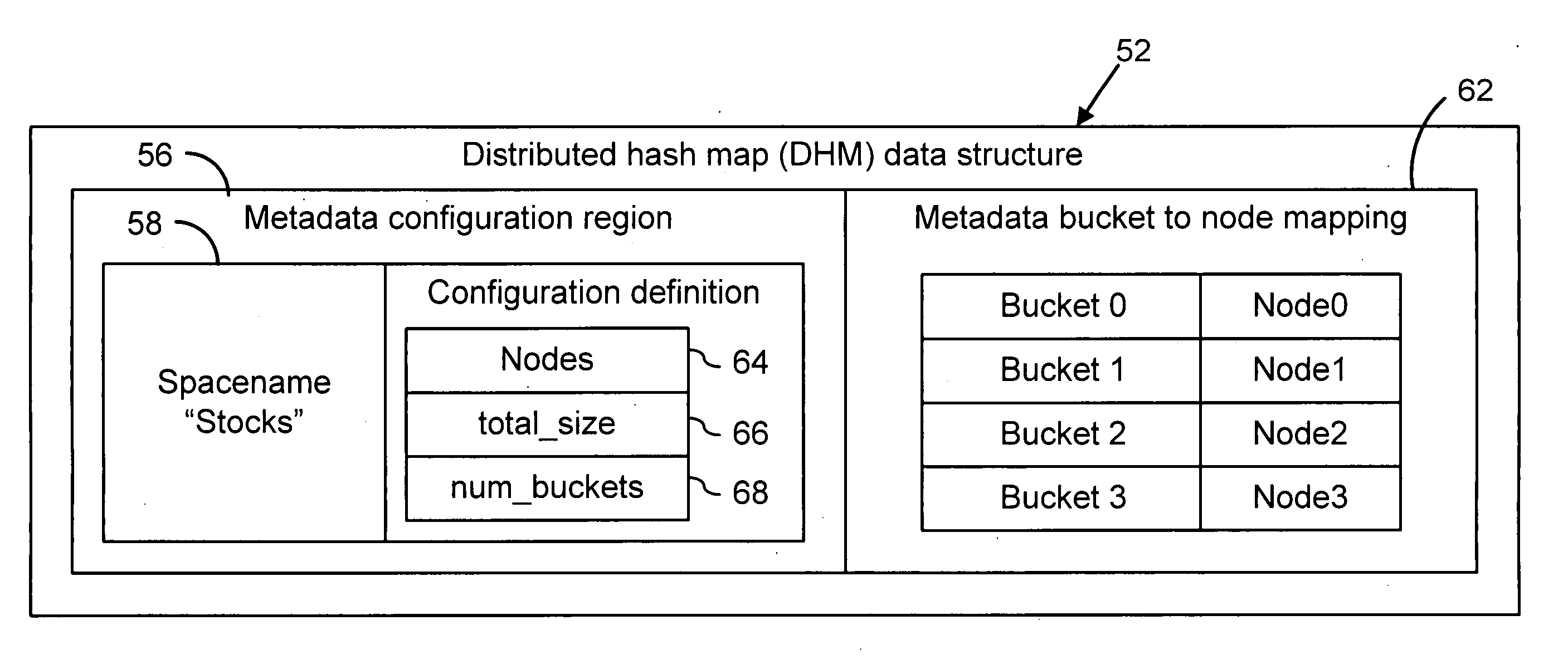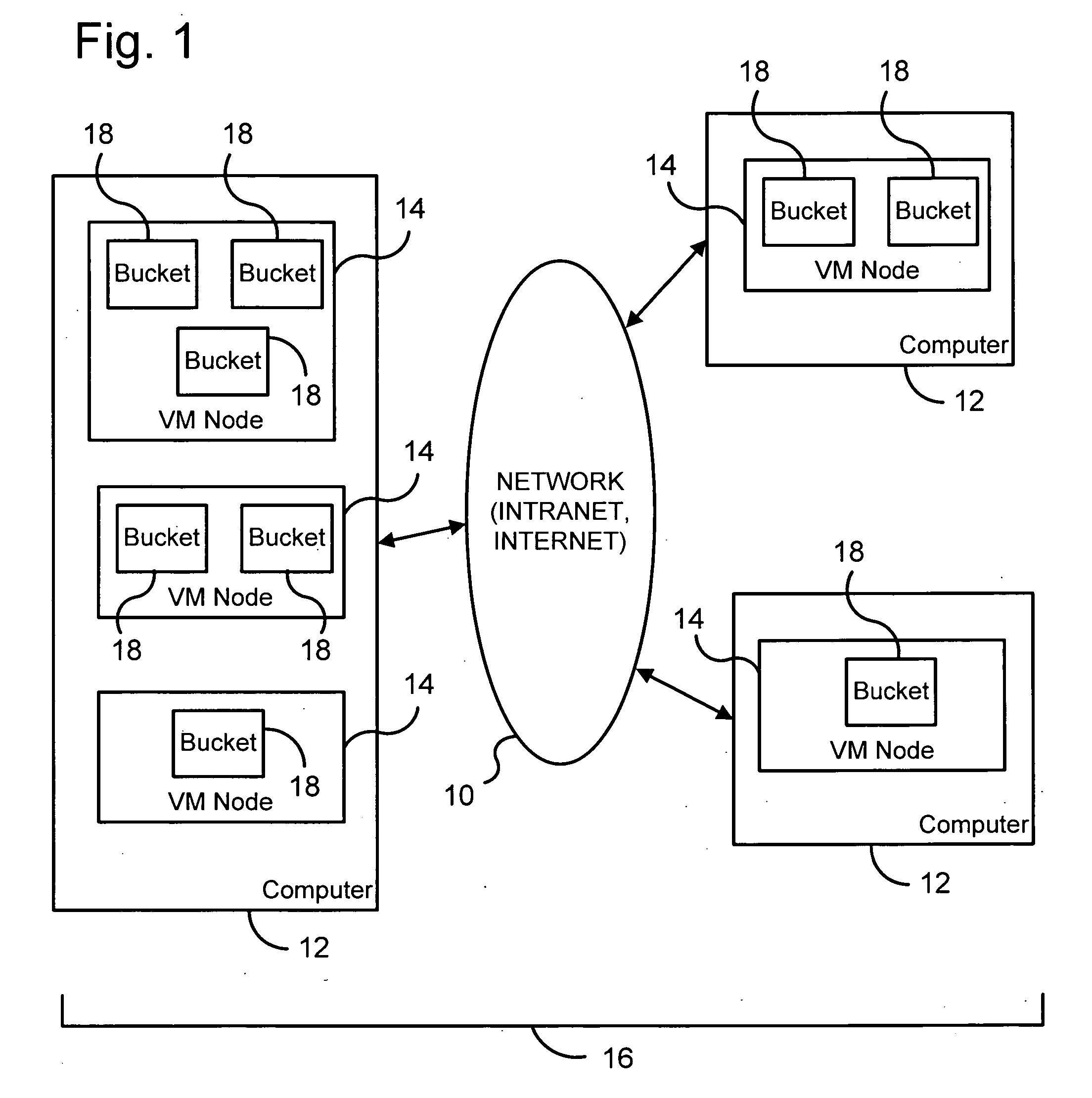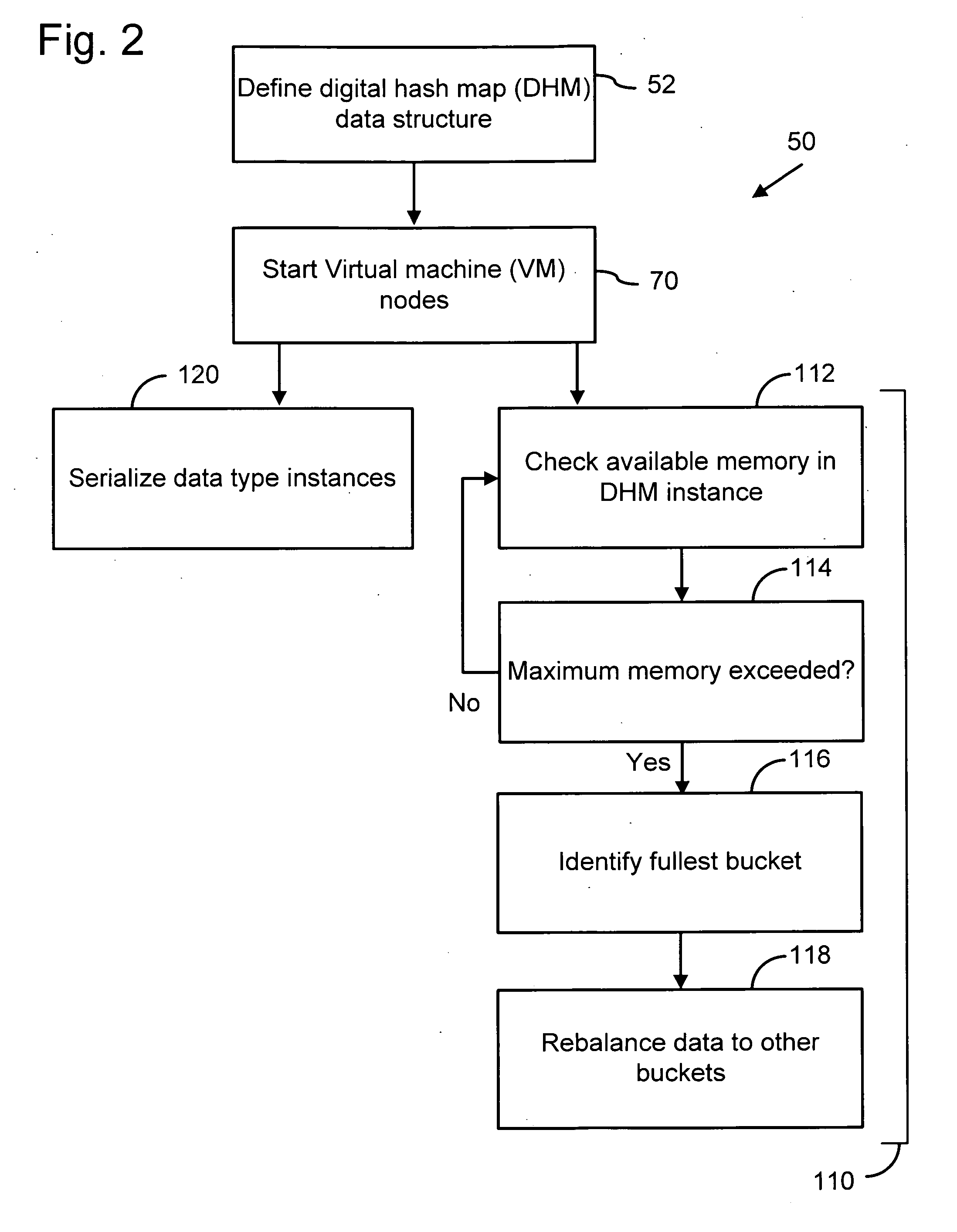Distributed data management system
a data management system and data technology, applied in the field of data management, can solve the problems of network latency, exacerbated problems, and difficult to maximize both scalability and performance at the same time, and achieve the effects of reducing concurrent data access, low performance, and high scalability
- Summary
- Abstract
- Description
- Claims
- Application Information
AI Technical Summary
Benefits of technology
Problems solved by technology
Method used
Image
Examples
Embodiment Construction
[0019]FIG. 1 is a block diagram illustrating a computer network 10 as an operating environment of the present invention. Computer network 10 includes multiple distinct computers 12 that are in network communication with each other. Each computer 12 operates at least one virtual machine (e.g., a Java virtual machine) as a node 14 of a distributed hash map data management system 16 of the present invention. Each virtual machine node 14 includes one or more logical stores or “buckets”18 into which data entries data objects are stored.
[0020]FIG. 2 is a flow diagram of a distributed data management method 50 that simultaneously provides highly scalable and highly concurrent distribution of data over multiple networked nodes 14. Distributed data management method 50 operating on computer network 10 is referred to as a distributed data management system 16 and is described with reference to a distributed hash map (DHM) data structure 52, which is illustrated in FIG. 3. Distributed hash ma...
PUM
 Login to View More
Login to View More Abstract
Description
Claims
Application Information
 Login to View More
Login to View More - R&D
- Intellectual Property
- Life Sciences
- Materials
- Tech Scout
- Unparalleled Data Quality
- Higher Quality Content
- 60% Fewer Hallucinations
Browse by: Latest US Patents, China's latest patents, Technical Efficacy Thesaurus, Application Domain, Technology Topic, Popular Technical Reports.
© 2025 PatSnap. All rights reserved.Legal|Privacy policy|Modern Slavery Act Transparency Statement|Sitemap|About US| Contact US: help@patsnap.com



